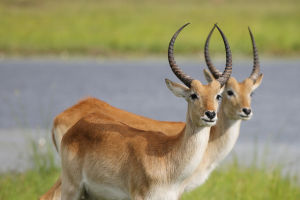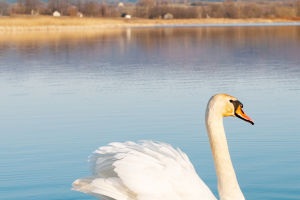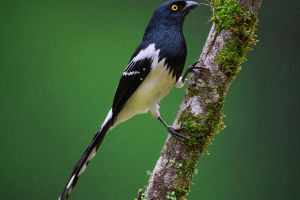The red panda, also known as the lesser panda or red cat-bear, is a small and ancient species that has captured the hearts of animal lovers around the world.
They are highly specialized carnivores, but their diet primarily consists of vegetarian food. While they have some similarities with the giant panda, they have their unique charm and appearance.
The red panda resembles a fox or a raccoon, but they are not related to these animals. They have short, nearly round faces and relatively strong bodies. Their size ranges from 80 to 120 centimetres in length and an average weight of about 5 kilograms.
The red panda's tail is thick and long, measuring about 30 to 50 centimetres, similar to that of a wolf's tail. Their most striking feature is their beautiful and vibrant reddish-brown fur with white patches and a long beard on their cheeks, around their nose and forehead.
Red pandas inhabit temperate climates in deciduous and coniferous forests at an elevation of 2500-4800 meters. They prefer large tree cavities or rock crevices and holes to sleep in during the day while foraging for food at night.
They rarely interact outside of the mating season, and they mostly feed on bamboo leaves, berries, flowers, bird eggs, and small leaves of other plants.
Red pandas have some unique biological characteristics that enable them to survive in their environment. They have thumbs on their forelimbs that they can use like humans to climb trees and grab food.
Their oesophagus has a special structure that helps them digest bamboo, which is difficult to digest. Additionally, they have ears and tails that help them retain body heat, preventing heat loss and acting as a blanket to cover their bodies.
The breeding season for red pandas is from January to March, and the gestation period for female red pandas is about 90-150 days. They give birth to one to four cubs, weighing only a few hundred grams each, in nests built in tree hollows or under leaves. The cubs remain with their mother for some time before leaving to live alone after about a year.
Despite their cultural significance and ecological value, red pandas face numerous threats in the wild.
Hunting and poaching have been prevalent since ancient times, and they are still kept as pets in some parts of the world, leading to continued poaching of red pandas in their natural habitat. Due to habitat destruction and inbreeding, their genetic diversity is low, making their conservation a challenging task.
To protect the red panda, conservation efforts are underway. Red panda habitats are being restored, and they are being monitored to ensure their safety.
Additionally, research is being conducted to understand their behaviour and ecology, which can aid in their conservation. By promoting awareness and protection of red pandas, we can ensure that they continue to thrive and contribute to the biodiversity of our planet.
The red panda is a unique and fascinating animal that is an ancient and valuable species. While they face numerous threats in the wild, conservation efforts are underway to protect them and their habitats.
As responsible citizens, we should promote their protection and raise awareness of their cultural significance and ecological value. By working together, we can ensure the survival of the red panda and other endangered species on our planet.


